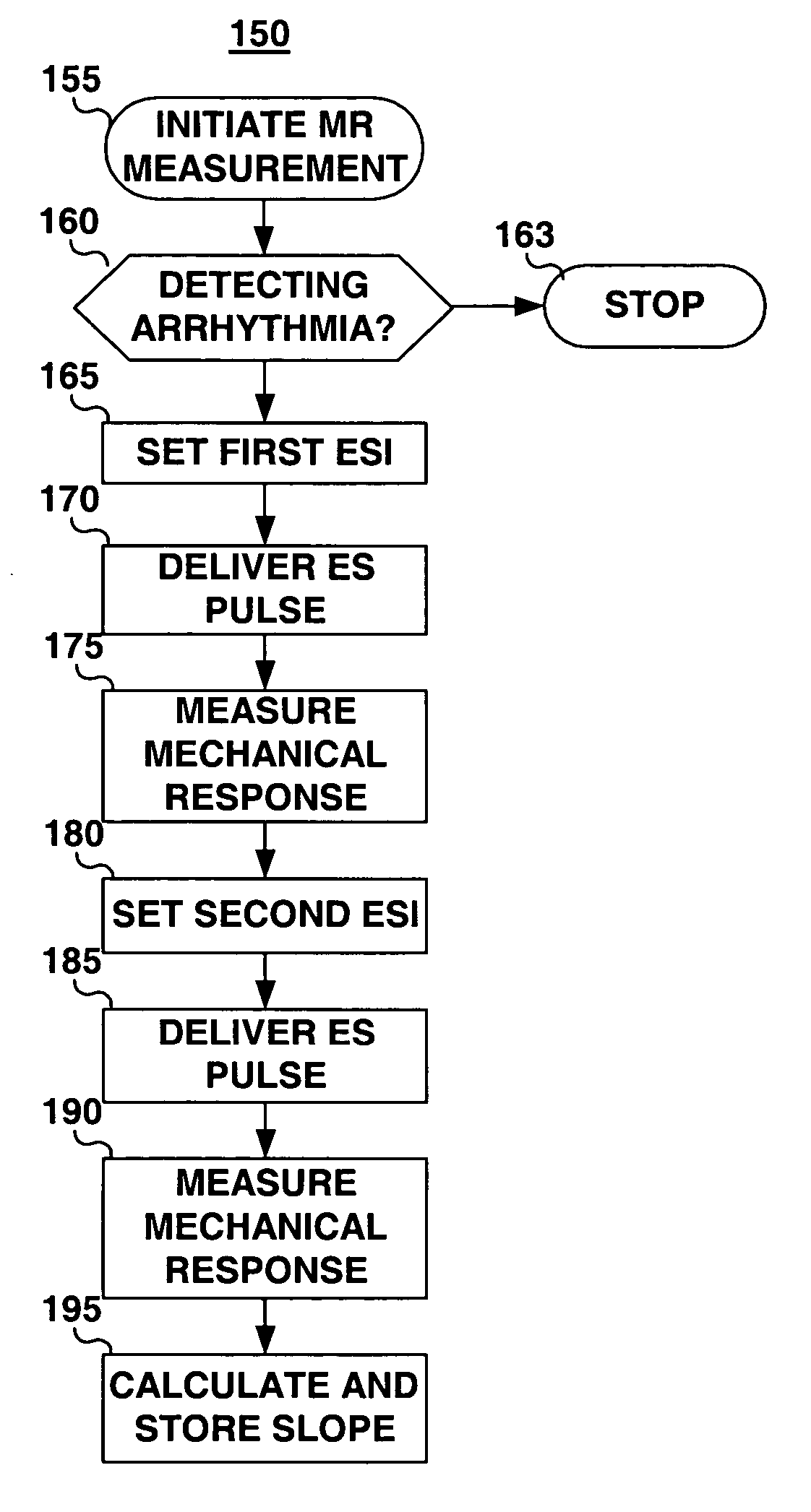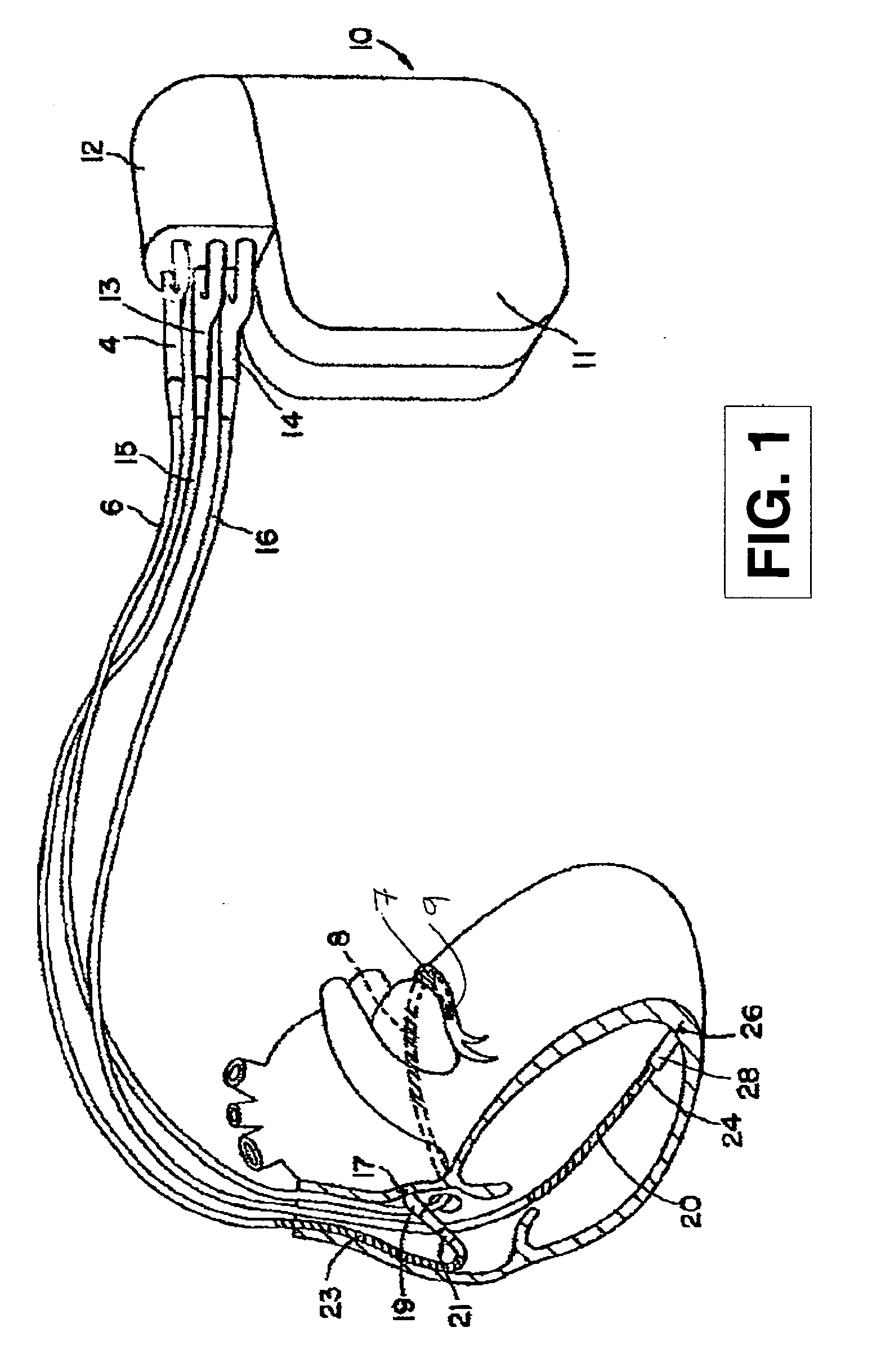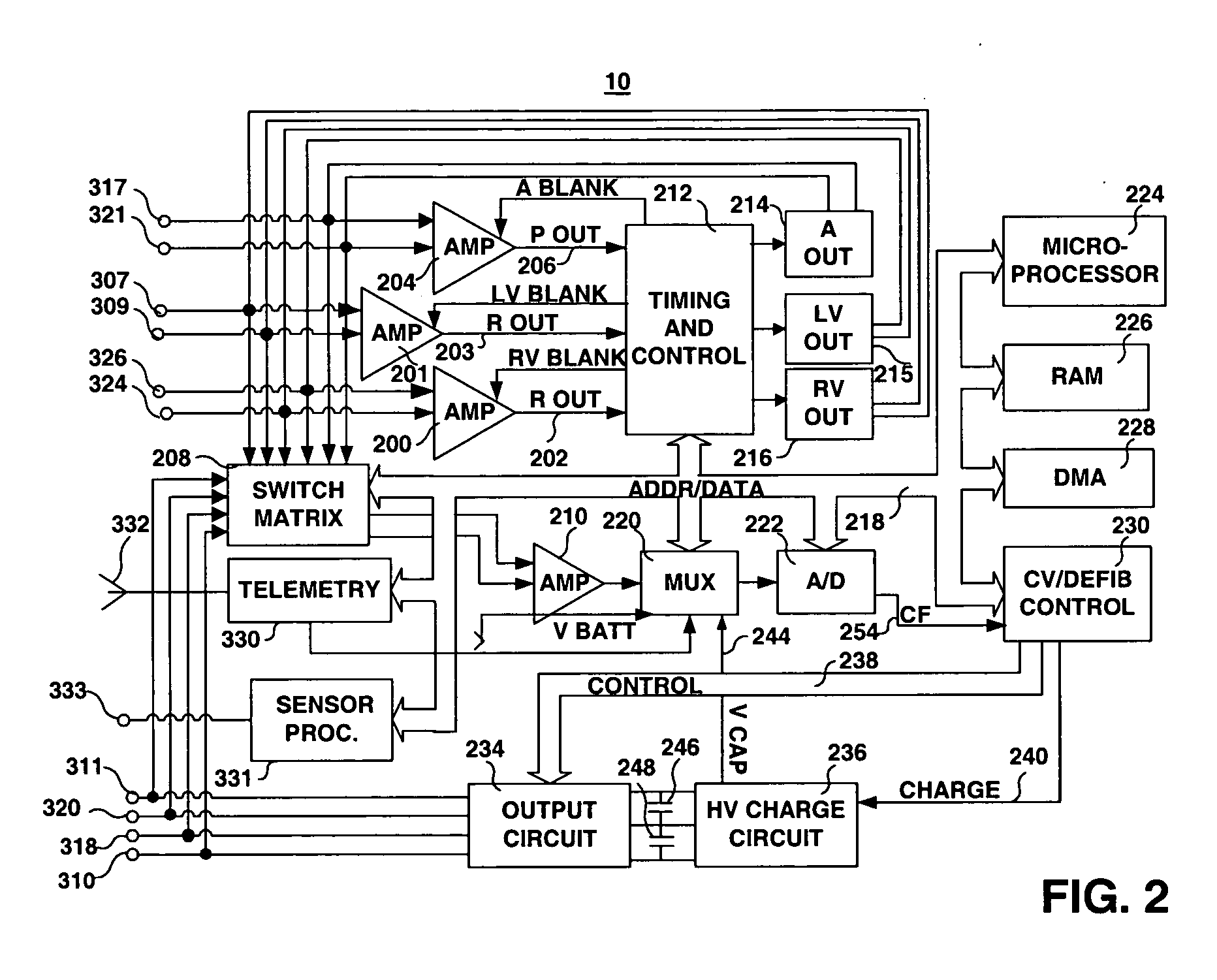Use of mechanical restitution to predict hemodynamic response to a rapid ventricular rhythm
a rapid ventricular rhythm and mechanical restitution technology, applied in the field of cardiac monitoring and electrical stimulation devices, can solve the problems of limited rate or interval-based arrhythmia detection methods, and does not provide information regarding the hemodynamic stability of a detected v
- Summary
- Abstract
- Description
- Claims
- Application Information
AI Technical Summary
Problems solved by technology
Method used
Image
Examples
Embodiment Construction
[0020] The present invention provides an implantable cardiac stimulation device and associated method for predicting the hemodynamic response to a rapid heart rhythm. Knowledge of the predicted hemodynamic response to a rapid rhythm is useful in selecting arrhythmia therapies, particularly tachycardia therapies. An unstable or stable hemodynamic response is predicted based on a measurement of a mechanical restitution parameter or surrogate thereof. The hemodynamic response to rapid ventricular rhythms will depend on the heart's mechanical restitution properties as well as the cardiac cycle length just prior to the first rapid heart beats. By measuring mechanical restitution, a prediction can be made as to whether a rapid rhythm like VT will be compensated for hemodynamically or is expected to result in hemodynamic insufficiency. If an unstable hemodynamic response to a rapid rhythm is predicted, a more aggressive menu of arrhythmia therapies may be programmed to treat tachycardia. I...
PUM
 Login to View More
Login to View More Abstract
Description
Claims
Application Information
 Login to View More
Login to View More - R&D
- Intellectual Property
- Life Sciences
- Materials
- Tech Scout
- Unparalleled Data Quality
- Higher Quality Content
- 60% Fewer Hallucinations
Browse by: Latest US Patents, China's latest patents, Technical Efficacy Thesaurus, Application Domain, Technology Topic, Popular Technical Reports.
© 2025 PatSnap. All rights reserved.Legal|Privacy policy|Modern Slavery Act Transparency Statement|Sitemap|About US| Contact US: help@patsnap.com



